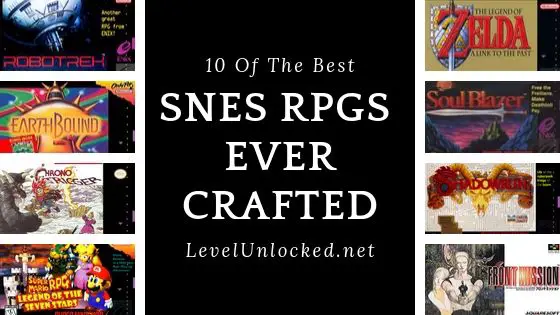The Super Nintendo Entertainment System is one of the most iconic game platforms of all time, boasting a robust library of games that encompass all manner of genres, the most prominent of which is easily the roleplaying game, or RPG. Nintendo platforms have historically had some of the greatest RPGs of all time, and the SNES is no exception.
Home to some of the most recognizable roleplaying franchises on Earth, the SNES was the first console that allowed RPG developers to spread their wings and experiment with grand plots, creative gameplay mechanics, and arresting visuals. Today, we’ll be looking at some of the best RPGs ever made for the console.
The Best SNES RPGs Ever Crafted
Here are our picks for the best SNES RPGs ever created.
Chrono Trigger
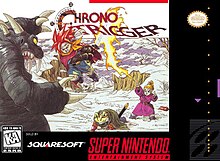
Chrono Trigger, the SNES RPG developed and published by Square in 1995, is truly a behemoth of a game- even by today’s standards. Fondly remembered for its intricate plotline and incredibly well-written characters, Chrono Trigger pushed the envelope on innovative storytelling within a game, and continues to inspire and influence modern RPGs.
Chrono Trigger’s development team consisted of some of gaming’s biggest talent at the time, including Hironobu Sakaguchi, creator of Final Fantasy, Yuji Horii, creator of Dragon Quest, and Akira Toriyama, a renowned artist known best by his work on the Dragon Ball manga. Together, they would create a world so fascinating and fully realized that many still believe Chrono Trigger to be the best role-playing game of all time.

Set on a planet similar to Earth, Chrono Trigger follows the adventures of Crono and friends as they travel through different periods in time to try and save the world from annihilation. Utilizing a tweaked version of the battle system from Final Fantasy IV, players must act strategically and quickly as they work to take down epic bosses and overcome memorable encounters.
Unforeseeable twists and turns, gut-wrenching revelations, and an unforgettable journey should put Chrono Trigger at the top of any Gamer’s list.
Mother 2
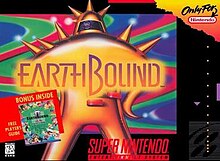
Mother 2, more commonly known in North America as Earthbound, is heralded not only as one of the best SNES RPGs, but one of the most influential RPGs of all time. Released in Japan in 1994 with a follow-up American release in 1995, Earthbound has both mystified and intrigued gamers for decades.
For many players, Earthbound was their first experience with the Mother franchise, as the first game in the series, Earthbound Beginnings (known as Mother in Japan), didn’t see a worldwide release until 2015. While it’s not necessary to play through the first Mother to appreciate Earthbound, the sudden arrival of a sequel to a franchise Americans were not familiar with saw the initial release of Earthbound largely ignored.

Fast forward to today, Earthbound is a near household name for RPG admirers. Set in the fictional country of Eagleland, players assume control of Ness, a young boy tasked with saving the earth from the alien lifeform known as Giygas. Giygas has engulfed Eagleland in hatred, consequently turning its residents and animals into aggressive monsters. Ness and friends must journey forth to stop this creature from destroying everything they hold dear.
Players explore Eagleland through a unique side-scrolling perspective unusual for traditional SNES RPGs, and battle monsters through a classic turn-based battle system. Unlike other roleplaying games of the time, Earthbound encounters are not randomized. Ness can avoid monsters on the overworld, only entering battle mode when coming into contact with an enemy.
Unbelievable plot developments, timeless visuals, and a soundtrack including music from The Beach Boys should put this title high on any gamer’s must-play list.
The Legend of Zelda: A Link to the Past

First released to critical acclaim in 1991 in Japan, and then later released to North America and Europe in 1992, The Legend of Zelda: A Link to the Past is a timeless classic that continues to attract new and old RPG aficionados alike.
Acting as a prequel to the original Zelda, A Link to the Past sees players taking up Link’s mantle for the first time as he adventures across Hyrule. Daunting dungeons, innovative puzzles, and horrific bosses await players brave enough to try and stop the dastardly Ganon from engulfing the realm in darkness.

Exploration and combat are the primary draws of this title, and A Link to the Past offers up spades of high-quality content that satisfies both itches. A beautifully realized overworld crammed with exotic destinations and fascinating people is explored through a unique birds-eye view, while combat is a simplistic but challenging dance of dodging enemy attacks and returning blows.
The Legend of Zelda: A Link to the Past continues to impress with its timeless design and engaging gameplay, and should be at the top of every player’s backlog who didn’t get to experience it during its heyday.
Robotrek

While not strictly a traditional RPG, Robotrek offers a unique blend of strategy and roleplaying mechanics that largely went ignored during its initial 1994 release. Combining elements from real-time strategy games, turn-based roleplaying games, and even Pokémon, Robotrek has gone on to retrospectively become one of the Super Nintendo’s most innovative titles.
While a bit lacking in plot or character development, Robotrek offers several creative systems that keep gamers engaged. The gameplay is similar to Pokémon titles in that players explore a large overworld and interact with various NPCs, and control a nameless character who battles through the use of robots he invents through the invention system.

Players can experiment with mixing different items to create a variety of different combat robots, who then follow the player’s instructions during turn-based battles. Robots are highly customizable, allowing players to choose their colors, names, abilities, and equipment. Players get three robots per battle, typically against a far larger force of enemies. Only one robot can fight at a time, emphasizing tactical play and strategy.
While initially receiving only middling reviews at launch, Robotrek has retrospectively become a cult classic. Gamers looking to experience a unique and fun battle-centric game should look no further than this innovative little title.
Shadowrun

Initially launching to critical success in 1993, Shadowrun would go on to financially flop as sales fell far flat of initial expectations. Credited with pioneering the film noir style within video games, Shadowrun was retrospectively marked as “Ahead of its time” by multiple publications, though the franchise currently enjoys a healthy fanbase.
An early example of the action role-playing genre, gameplay in Shadowrun ranges from peaceful exploration and player-driven dialogue to intense combat that requires sharp reflexes and excellent precision. Players step into the shoes of Jake Armitage, a shadowrunner who is gunned down and later awakens in a morgue with total memory loss.

Combat is a unique blend of character positioning and point-and-click shooting. Enemies often ambush Jake as he explores the world, encouraging quick response time. Players receive karma after battles and certain decisions through the story, which can be allocated into different skills, attributes, and magical abilities.
Shadowrun is a forebearer to many incredible games that we play today, and gamers looking to dip their toes into this fascinating universe could find no better starting point.
Super Mario RPG: Legend of the Seven Stars
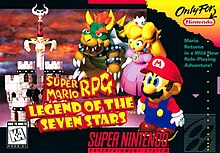
Mario may be a household name, but few aside from SNES RPG enthusiasts have ever experienced one of his most thrilling adventures: Super Mario RPG. Released in 1996, SMRPG would go on to become Japan’s third best-selling game of the year, and eventually be hailed retrospectively as one of Nintendo’s crowning achievements for the decade.
Super Mario RPG plays unlike any other traditional Mario adventure, in that gameplay closer resembles that of a Squaresoft game than a Nintendo title. Tasked once again with saving the princess, Mario no longer relies on high-speed acrobatics to defeat foes, but instead, utilizes a wide variety of abilities and attacks that are selectable through turn-based menu combat.
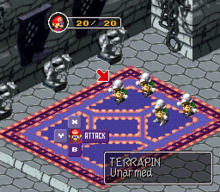
The gameplay is divided into two traditional RPG sections: the overworld Mario explores that allows for some minor platforming and exploration in classic Mario style, and the battle phases that appear whenever Mario collides into an enemy while exploring. Exploration is often considered to be the game’s strongest selling point, as SMRPG is the first Mario title to be rendered in 3d, lending to a level of environmental detail that was rare for the time.
While battles in Super Mario RPG aren’t as complicated as other SNES RPG titles such as Final Fantasy, they do offer fun and engaging mechanics that are easily accessible by players of all skill levels. The player starts the game only controlling Mario and possessing few attack moves but quickly grows their menu to include more advanced abilities and an expanded roster.
Fans of RPGs and Mario games alike will find a lot to love with Legend of the Seven Stars, and its easy accessibility make it a great starting point for players new to the genre.
Soul Blazer
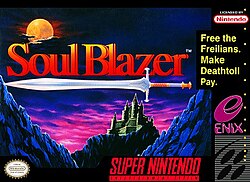
A hidden gem of a SNES RPG, Soul Blazer is not often mentioned in classic gaming circles, mainly due to its lack of attention during its 1992 launch. Widely ignored by the European market, and only barely making a splash in America, Soul Blazer is a straight forward, no-frills dungeon crawler with style.
Often considered part of an unofficial trilogy with Illusion of Gaia and Terranigma, Soul Blazer centers on the story of Blazer, a divine deity that is sent to free the Freil Empire from the evil spirit Deathtoll. Deathtoll has destroyed every village in the empire and enslaved the souls of those who resided there.

The gameplay is very combat-centric and plays similar to Legend of Zelda titles released around the same time. Players explore an oppressive overworld and defeat enemies through the use of magic skills, items and weapons, and move on to the next level after defeating the stage’s boss.
SNES RPG enthusiasts looking for an exciting blend of games in a forgotten but fun and easily accessible title should seek out Soul Blazer.
Front Mission

Another mostly forgotten SNES RPG gem, Front Mission is far from the traditional roleplaying game. Released exclusively in Japan for the Super Famicom in 1995, Front Mission wouldn’t make its way to North American shores until 2003, when it would be remastered with new content and scenarios for the original Playstation.
Front Mission is both an RPG and a strategy game rolled up into one highly polished mishmash of genre tropes. Players take control of Wanzers, highly customizable walking tank units that respond to player’s commands. Gameplay takes place on large scale maps, where the player and computer-controlled enemies take turns positioning their units and trading blows in a style similar to the battle system from the Fire Emblem franchise. Players can customize their Wanzers between missions and prepare sorties for their next adventures, emphasizing forethought and strategic team load-outs for the job at hand.

Interestingly, to understand the entire story of Front Mission, one must not only play through the original campaign, but also play through the new scenario offered by the remastered edition. Each campaign has mysteries and plot holes that are only explained through the other campaign, and the full story cannot be realized without experiencing both perspectives.
Front Mission is an incredible experience, and while many may no longer remember its name, it still a game worth diving into for fans of strategy and SNES RPG titles alike.
Final Fantasy VI
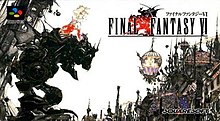
Instantly recognizable as possibly the largest RPG franchise ever released, Final Fantasy VI is widely considered to be not only the best of the series, but one of the most exceptional roleplaying experiences ever conceived. Beloved for its wonderfully written and diverse cast of fourteen playable characters, memorable events, and grand plotline, FFVI is a timeless classic that still holds up to this day.
Being the first title directed by someone other than series creator Hironobu Sakaguchi, fans had reservations about the new steampunk aesthetic that new directors Yoshinori Kitase and Hiroyuki Ito wanted FFVI to take. Upon its release in April 1994, however, fans’ fears were quickly forgotten as the game released to universal critical and financial success.
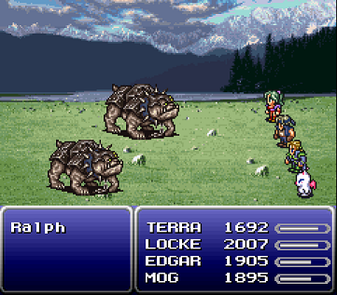
Final Fantasy VI starts with players controlling Terra Branford, arguably the game’s main protagonist, but quickly introduces a large cast of playable characters that take a central role in the plot’s development. Terra and the friends she meets along her journey ultimately become a rebel group of fighters trying to overthrow the Gestahlian Empire. Combat is presented in traditional menu-based Final Fantasy style, with the Active Time Battle system making a return from past titles.
FFVI has long captured the imaginations of gamers with its incredible imagery and beautiful writing, and has since inspired numerous tonal shifts throughout the franchise’s later releases. Gamers looking to experience a masterclass in storytelling and artistic style should look no further than this.
Shin Megami Tensei II

One of the earlier examples of an SNES RPG utilizing the post-apocalyptic setting to realize its full potential, Shin Megami Tensei II was generally ill-received when it launched for the Super Famicom in 1994. Reviewed poorly at the time for it’s monotone soundtrack and cliché plot developments, SMT2 only found it’s home in the hearts of gamers years after release upon retrospection.
SMT2 follows the story of Hawk, an amnesic gladiator that is capable of communicating with demons. Gameplay follows the same unique setup as the first game: the player makes use of a sizeable birds-eye view of a map to find locations to explore, and entering into a location or building switches to a first-person perspective. The player traverses rooms and corridors as an indicator at the bottom of the screen highlights the likelihood of a demonic encounter.

A unique aspect of combat is Hawk’s ability to speak with demons and attempt to win an alliance with them instead of fighting them. Players can choose which attitude they wish to approach a demon with, and can make dialogue and action choices based off the demon’s response. A successful persuasion attempt will add the demon to the player’s party, where he can choose to fight alongside the beast, or fuse it with another demon for a chance at an even more powerful creature.
Playing Shin Megami Tensei II, it’s easy to see from where later games such as The Elder Scrolls: Daggerfall and the original Deus Ex got took their inspiration. Gamers looking for a rich plot and classic in-depth gameplay should look to add SMT2 to their collection.
We hope you enjoyed this list of the best SNES RPGs. If you think we missed a great one, let us know in the comments below.

